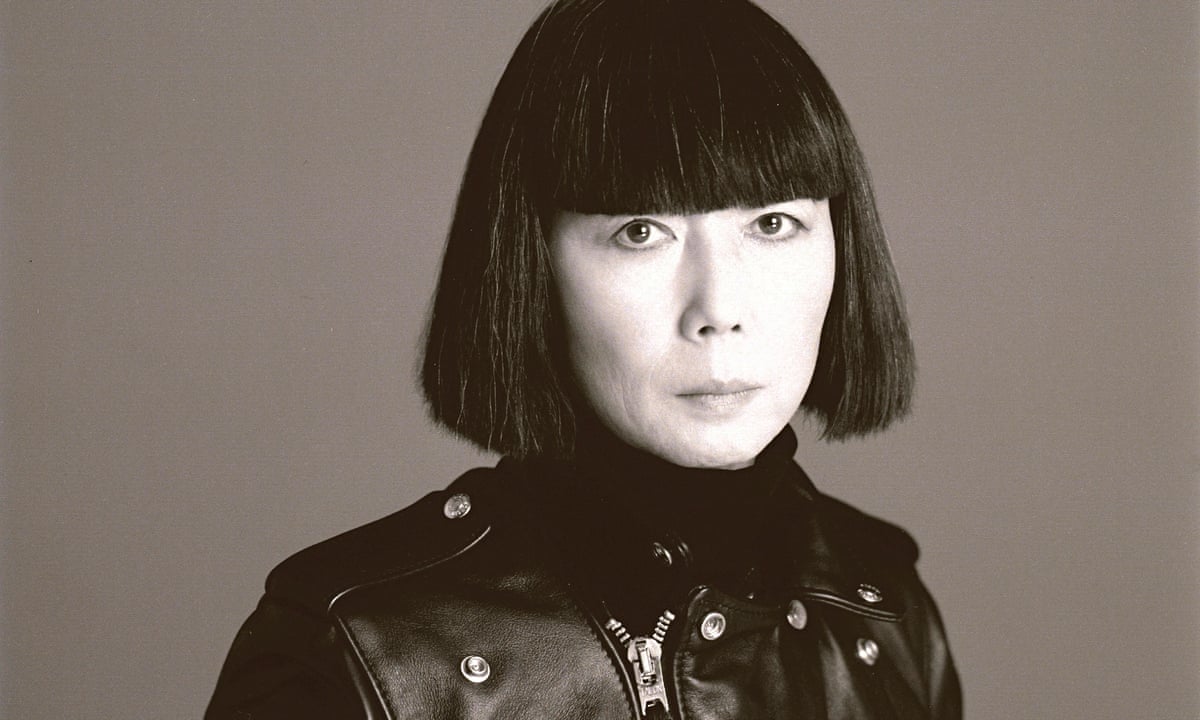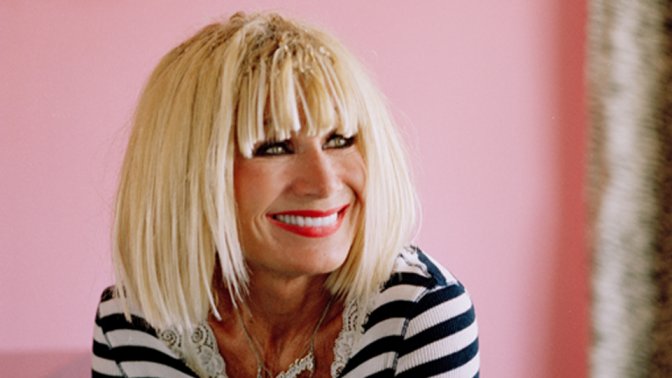The Costume Institute Exhibition honored two of fashion's most beloved women designers:Elsa Schiaparelli and Miuccia Prada. But what about the other female names that have helped to change fashion forever?
Recently, Nicole Phelps noted that in New York fashion today there is a surprising lack of big-name female designers, which begged the question: "Is it easier to succeed in New York fashion as a man?" Phelps certainly has a point: After all, in the CFDA/Vogue Fashion Fund's eight year history, the prize has only been awarded to women designers twice.
Madeleine Chéruit
She may not be a household
name like Coco Chanel or Elsa Schiaparelli, but the fact is Madeleine
Chéruit helped pave the way for female fashion designers, becoming one
of the first women to control a major French fashion house, at the turn
of the century. Chéruit got her start working as a dressmaker at
Raudnitz & Cie House of Couture in the late 1880s, but her talent
was so exceptional that she eventually took over the salon and its more
than 100 employees in 1905, renaming it Chéruit. She helped launch the
career of Paul Poiret by supporting his designs, won the praise of Vogue,
and was one of the few couture houses that remained open during WWI.
Though the house shuttered in 1935, Chéruit's influence in fashion
design--and particularly female fashion design--can still be felt. In
fact, it was Elsa Schiaparelli who famously took over Chéruit's 98-room
studio and salon, forever tying the two designers together.
Jeanne Paquin
Considered by many to be one of the first female couturiers, Paquin was known for her fashionable eighteenth century-inspired pastel evening dresses, as well as for her "publicity stunts", which in early twentieth century Paris meant organizing fashion parades (the runway show predecessor) and sending outfitted models to society events like operas and races. Sacre Bleu!
Coco Chanel
Obviously, Coco Chanel needs no
introduction--her influence today is as strong as ever, as the house
she founded remains one of the most coveted and respected labels in the
world. "She introduced what are now staples of sportswear into
womenswear, in part, by borrowing from the vocabulary of menswear,"
Parsons' Francesca Granata tells me. "Her relevance to fashion is
incredible."
Jeanne Lanvin
Another female fashion
designer whose house remains as relevant today as when she founded it is
Jeanne Lanvin. Trained as a milliner and dressmaker, Lanvin began
making clothes for her daughter that were so beautiful, a number of
wealthy people began requesting copies for their own children, and the
designer happily obliged. Lanvin was born--as a childrens wear label.
Soon, though, mothers began requesting similar designs that they
themselves could wear, and within years the business had grown to
include womenswear, perfume and home design, making Lanvin the first
designer to see the potential of a lifestyle brand.
Elsa Schiaparelli
"She really infused a
level of humor into fashion and, in my opinion, is a precursor of what
today we call experimental or avant-garde fashion," Granata said. "In
addition, she excelled at tailoring and was really influential in the
development of
structured jackets for women." No wonder, she's getting a whole--well,
half--a Met Exhibit.
Madeleine Vionnet
Considered one of the most influential designers of the 20th century, female or not, Madeline Vionnet is credited with introducing the bias cut and popularizing grecian style dresses, the shockwaves of which can still be seen today. "[Her] innovative techniques were widely studied and used by many of our great designers," Jennifer Minniti, Chair of the Department of Fashion Design at Pratt, tells me.
Madame Grès
"While not as well known as
Vionnet, Chanel or Schiaparelli, Gres was also an influential
couturier," Granata said. The designer is best known for her classically
inspired floor-length pleated gown, and Minniti calls her "the master
of the wrapped and draped dress."
Valentina
Valentina designed dramatic
evening gowns for Hollywood's elite, pioneering the notion of red carpet
glamour. She was also one of the first to be known by merely her first
name.
Claire McCardell
"[McCardell] is known as
the inventor of American sportswear or ready-to-wear," Minniti says.
Which is, you know, a pretty big claim to fame. Her simple silhouettes
and frugal use of fabrics (particularly during WWII) helped shape the
democratic and casual sensibility that we associate with American
ready-to-wear today. Her influence was so great that in 1950, President
Harry S. Truman presented her with the Women's National Press Club
Award, making her the first fashion designer to be voted one of
America's Women of Achievement.
Bonnie Cashin
Along with McCardell, Cashin
pioneered the concept of American sportswear or ready-to-wear as we know
it. The designer started her career designing clothing for chorus girls
in Los Angeles, eventually making it to the silver screen, creating
wardrobes for seminal films like A Tree Grows in Brooklyn and Anna and The King of Siam.
Among some of her innovations, according to Minniti, was the minimal
use of seams and darts, and the introduction of layered outfits that
suited her jetset lifestyle.
Barbara Hulanicki
Hulanicki's Biba store,
full of affordable mini-skirts, floppy felt hats, feather boas, and
velvet trouser suits, became synonymous with the glamorous, rock n' roll
style of the period. She counted David Bowie, The Rolling Stones, and
Marianne Faithfull all as clients and in 1964, she gave a 15-year-old
nobody by the name of Anna Wintour, her first job as a sales assistant.
Mary Quant
Quant was instrumental in the
mod fashion movement, and is widely credited as the inventor of the
miniskirt and of hotpants. While the new styles were certainly meant to
be risque and sexy, they also represented growing liberation in women's
fashion--and we owe much of today's skin-baring styles (and the
ever-smaller outfits of Katy Perry, Lady Gaga, Ke$ha et al) at least in
part to Quant.
Sonia Rykiel
Rykiel's super soft dresses and sweaters--and most famously "The Poor Boy Sweater," which covered Elle in 1967--earned her title of "Queen of Knits," a name, which the designer's label continues to live up to today.
Katharine Hamnett
Not all influential
designers are couturiers. Hamnett's slogan t-shirts may seem
run-of-the-mill now, but at the time they were revolutionary--and, as
Minniti points out, their design "continues to be copied [by countless
companies and designers today.]"

Rei Kawakubo
"In the 1980s, together with
Yohji Yamamoto, she revolutionized Paris fashion, by introducing a style
of dress that merged Western and Japanese influence and was notably
distinct from 1980s high fashion," Granata explains. "Following the
principle
of wabi-sabi, her 1980s work employed 'poor' and seemingly battered
material and posed a challenge to body-hugging silhouette popular during
the period." To this day, Kawakubo remains one of the most beloved (and
unconventional) designers of our times.
Vivienne Westwood
We can thank Westwood for bringing modern punk and new wave fashions into the mainstream. Without her, safety pin shirts, sky-high platform shoes (like the ones Naomi Campbell famously tripped in), plaid pants and, of course, expertly draped dresses would not nearly be so chic.
Betsey Johnson
Johnson's over-the-top, thoroughly modern designs captured the youthquake movement in the early 70s, making her a favorite of style icons like Edie Sedgwick, who was Johnson's house model and wore only Betsey Johnson in her last film, Ciao Manhattan. Betsey also pioneered the end-of-runway cartwheel, for which we are forever grateful.Diane Von Furstenberg
As everyone knows, Furstenberg was instrumental in revolutionizing womenswear with the introduction of her famous wrap dress--but her work as the CFDA's president, nurturing young talent and helping to set healthier standards within the industry, is equally as important.Carolina Herrera
The recipient of the CFDA's prestigious Geoffrey Beene Lifetime Achievement Award in 2008, Herrera has built an empire on her elegant, chic wares and is credited with making the white shirt a must-have staple in every woman's wardrobe.
Vera Wang
Best known for creating some of the world's most recognized bridal gowns (ahem, Kim Kardashian), Wang's empire also includes a ready-to-wear line, diffusion line for Kohls, tuxedo line, and multiple fragrances, marking her as a formidable businesswoman as well as designer.Donna Karan
As the role of women in the
workforce began to change, with more and more women rising to the top of
the career ladder in leadership or managerial roles, so too did their
wardrobe. Karan was responsible for developing stylish staples for the
everyday career woman, that were comfortable and gave off an aura of
power--clothes that Karan, as a career woman and mother, would also want
to wear.
Miuccia Prada
The breadth of Prada's designs--from the nylon handbags in the mid-80s that made her famous to Spring 2012's critically acclaimed fifties-inspired collection--is truly inspiring. Suffice to say she will remain an iconic designer for decades to come.Besides the feminine, flattering, and easily wearable sensibility that has made her label such a success, McCartney has also been a pioneer in vegan and environmentally-conscious fashion.
No comments:
Post a Comment